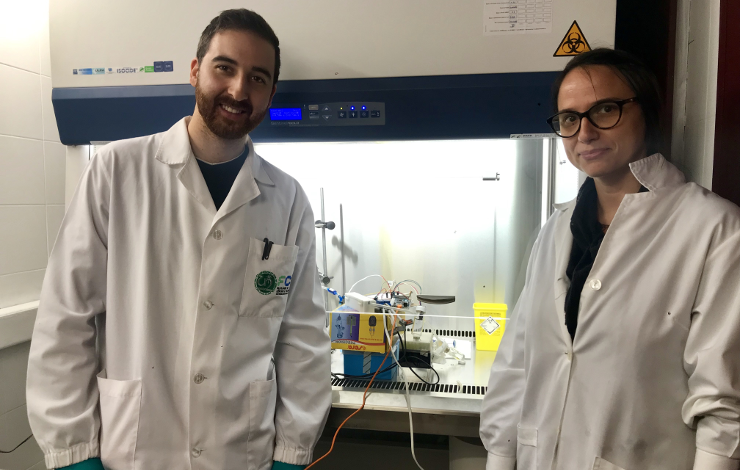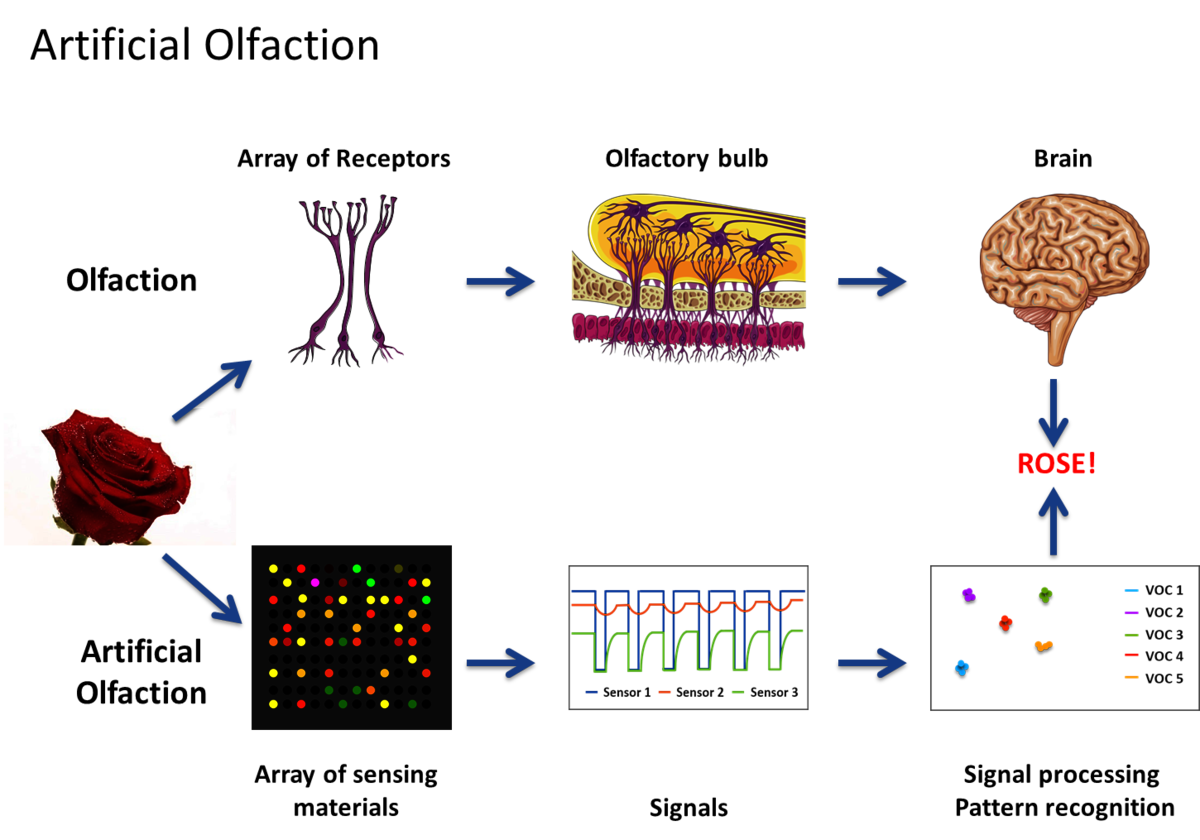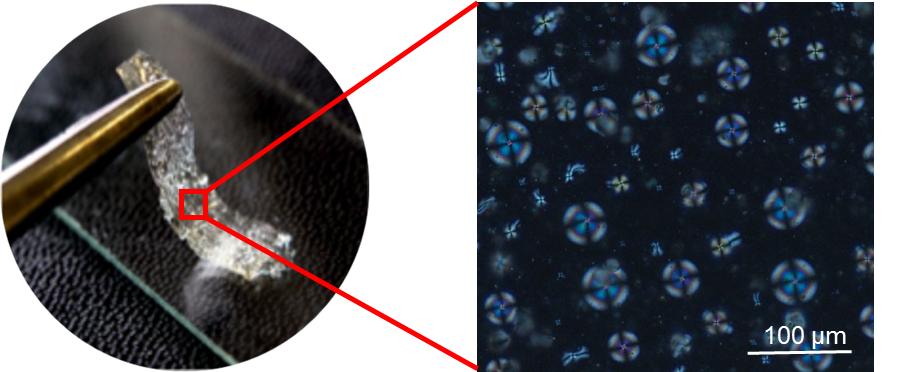17-04-2019

The Biomolecular Engineering Lab at UCIBIO in Lisbon NOVA School of Science and Technology (FCT-NOVA), led by Cecília Roque, showed that gelatin can be more than food. For the first time, it was shown an example of soft matter in artificial olfaction, where engineered gelatin materials combined with artificial intelligence tools were used to mimic the sense of olfaction. The results of this research work are published in the scientific journal Materials Today Bio - Effect of film thickness in gelatin hybrid gels for artificial olfaction.
In olfaction, volatile compounds, which make up odors, bind to specialized olfactory proteins in the nose. These binding events result in electrical signals sent to the brain, where pattern recognition is performed and the odor is identified (Image 1). Electronic noses (e-noses) are intelligent gas sensing devices that mimic the sense of smell, mirroring the biological orchestra of olfactory proteins and the intricate brain computing processes used in odor recognition, by a combination of chemical sensors and artificial intelligence. Conventional e-noses use metal semiconductors and synthetic polymers for chemical sensing. However, these are associated with low selectivity and with a high carbon-footprint during production and operation.
Recently, Cecília Roque’s research group introduced the concept of hybrid gels. In these gels, gelatin is combined with liquid crystals (ubiquitous in LCD flat-screens on televisions, laptops, or mobile phones) (Image 2), resulting in optical materials responsive to external stimuli, including odors. By implementing an automatic classifier of odors based on machine learning algorithms (one of the tools used in artificial intelligence), the study published shows that a gelatin hybrid gel can distinguish volatile compounds with very similar structures, such as acetone and ethanol.
“The liquid crystals in the gels are ordered. However, in the presence of volatile compounds this order is disrupted, yielding typical optical signals to each odor, just like our digital fingerprint”, explains Carina Esteves, one of the first authors of the study. Gonçalo Santos, the other first author, adds that “to apply machine learning algorithms to these odor fingerprints and build an automatic classifier, we first taught the system which signals correspond to which odors; then, when the system is exposed to an unknown sample, it can accurately identify the odor”.
“This is the first report of an intelligent system for gas sensing employing gelatin-based materials. Our findings strengthen the importance of simple and widespread soft matter, as gelatin and liquid crystals, to design smart functional materials that respond to external stimuli. Although we explored the gels for artificial olfaction, an area increasingly relevant in the field of non-invasive clinical diagnostics, there are many other interesting applications, as for example in soft bioelectronics and robotics, or wearable devices" says Cecília Roque, coordinator of this study and also professor at FCT-NOVA. This research work was funded by the SCENT project, a grant awarded to Cecília Roque by the European Research Council (ERC).

Image 1. Analogy between biological and artificial olfaction.

Image 2. A gelatin film and image of liquid crystal droplets encapsulated within the gel obtained by microscopy.
Reference of the publication
Carina Esteves*, Gonçalo M. C. Santos*, Cláudia Alves, Susana Palma, Ana R. Porteira, João Filho, Henrique M. A. Costa, Vitor D. Alves, Bruno M. M. Faustino, Isabel Ferreira, Hugo Gamboa, Ana C. A. Roque.
Effect of film thickness in gelatin hybrid gels for artificial olfaction, Materials Today Bio. 2019
* These authors contributed equally to this work
More news: